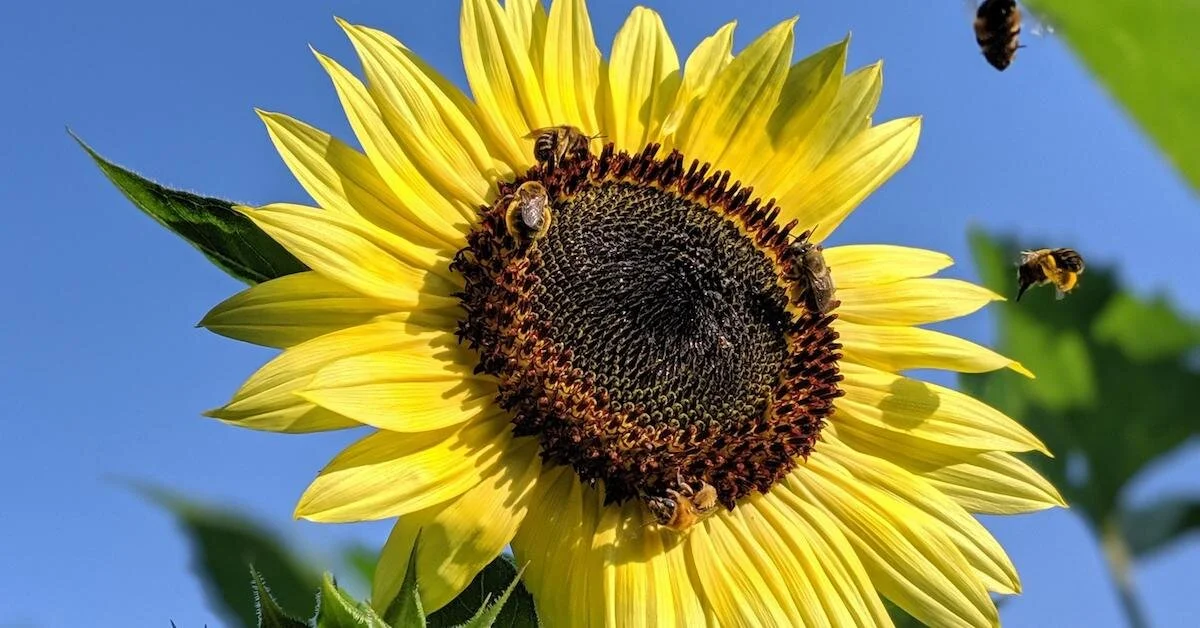What You Can Do for Pollinator Health in Your Floral Work
In the 1990s, pesticides such as neonicotinoids began being used as an alternative to more harmful pest management options of the past. Rather than causing immediate death, the newer pesticide caused behavior changes that eventually resulted in the death of bees and other pollinators.
Neonicotinoids (neonics) are derived from tobacco plants, with the insecticide imidacloprid being the most commonly used variety. Like nicotine, neonics bind themselves to nerve cell receptors and cause issues in pollinators that range from seizures and cell death to impaired neuron function and poor hygiene habits.
Pollinators become exposed to these pesticides by foraging on pollen and nectar of contaminated plants. Even with reduced pesticide usage, these products can accumulate in the soil and can continue to expose important pollinator species to their harmful effects. Research has found these pesticides in streams, honey, garden flowers, and even wildflowers.
If that wasn't devastating enough, bees face another hurdle called Nosemosis, an illness caused by the fungus Nosema apis. Bees ingest this fungus with their food, which then continues to grow on their intestinal walls. The addition of neonic pesticides stresses bees and allows for the fungus to evade the immune system. This stress and exposure impairs the bees' ability to forage, care for young, and even disorients flight paths. When all the exposure symptoms are combined, it's no wonder that colony collapse disorder is so prevalent.
By embracing alternative pest management practices, flower growers can make a difference in pollinator survival. The most common methods are alternative pest removal practices, slug and snail management, adding beneficial insects, and reducing weeds.
Pest Management Practices That Assist in Pollinator Survival
Alternative Pest Removal
Spread wood ash and/or diatomaceous earth at ground level. Wood ash and/or diatomaceous earth causes injury to pests by compromising their waxy coating (exoskeleton), drying out the pest, and leading to its death.
Companion planting benefits plant growth by increasing diversity of beneficial pollinators but also lessens pest pressure by repelling unwanted insects.
Washing plants with a garden hose where pests are found removes pests. Although this gives immediate relief, it is not a permanent solution.
Slug and Snail Management
Creating a shelter (either store-bought or from a large leaf) that lures slugs and snails allows them to be removed without chemicals or harming beneficial insects.
Having ducks and chickens will reduce slugs and snails through natural foraging instincts.
Add in Beneficial Insects to your garden
Purchase or attract beneficial insects such as
Ladybugs
Spiders
Nematodes
Reduce weed pressure with landscape fabric
Weeds provide food and shelter for pests. Landscape fabric reduces weeds and reduces or eliminates ideal habitat for pests
Why Are Flowers Important for Pollinator Survival?
Lund University in Sweden conducted a three-year study on organic farming that found organic practices contribute to the slowing of pollinator decline. The number of bumblebee species on organic farms was also found to be higher and more stable when compared to conventional farming practices. Bumblebees were also studied by researchers at North Carolina State University and the University of Massachusetts to determine what effects if any, sunflowers had on bee health. What researchers found is that sunflower pollen provides an important probiotic that benefits bumblebees and improved colony health.
Community and private gardens in cities support the highest bee and pollinator abundance. By obtaining and developing vacant lots, urban growers can also reduce feelings of depression, improve overall mental health in community members, and can help improve community safety and physical health by reducing stress levels.
Flowers That Are Good for Pollinators
While growing high-demand flowers is vital for business profit, it's also important to focus on growing native flowers that are good for pollinators. Hybrid and imported flower varieties can often be pollen-free, making necessary food options unavailable for pollinators. Grow the flowers below to make a difference:
Black-Eyed Susan – United States, Canada
California Poppy – Western United States
Columbine – Eastern United States, Eastern Canada
Garden Phlox – Eastern United States
Lupin – Eastern United States, Central Canada
Sunflower – United States, Central America
Yarrow – Europe, Western Asia, North America
Poppy – Europe, Middle East
Rose – Europe
Tulip – Europe, Middle East
Calla Lily – South Africa
Gerbera Daisy – Russia
Waxflower - Australia
Florists and Designers, You Are Not Forgotten!
As florists and floral designers, it's essential to be mindful of the flowers used in designs beyond where they're grown. Organic or sustainably grown flowers are less likely to contain harmful pesticides, which can decrease the environmental impact of the floral industry.
Not sure how to determine the quality of the flowers being used? Reach out to wholesalers where flowers are purchased. Wholesalers should have access to international and national grower information. Still unsure? Purchase local! Having access to locally grown flowers removes wholesalers from the product chain, which gives greater access to important grower information.










